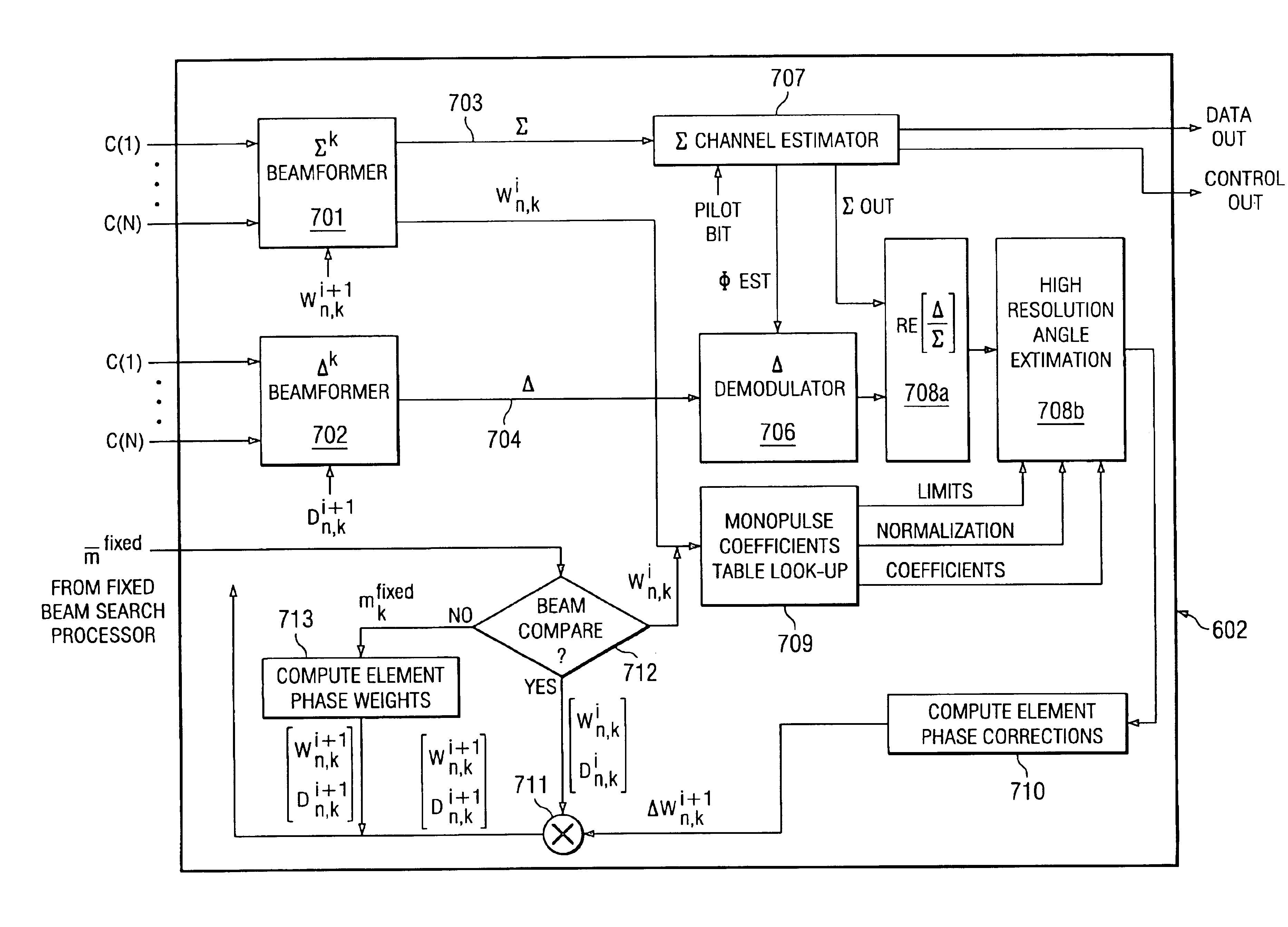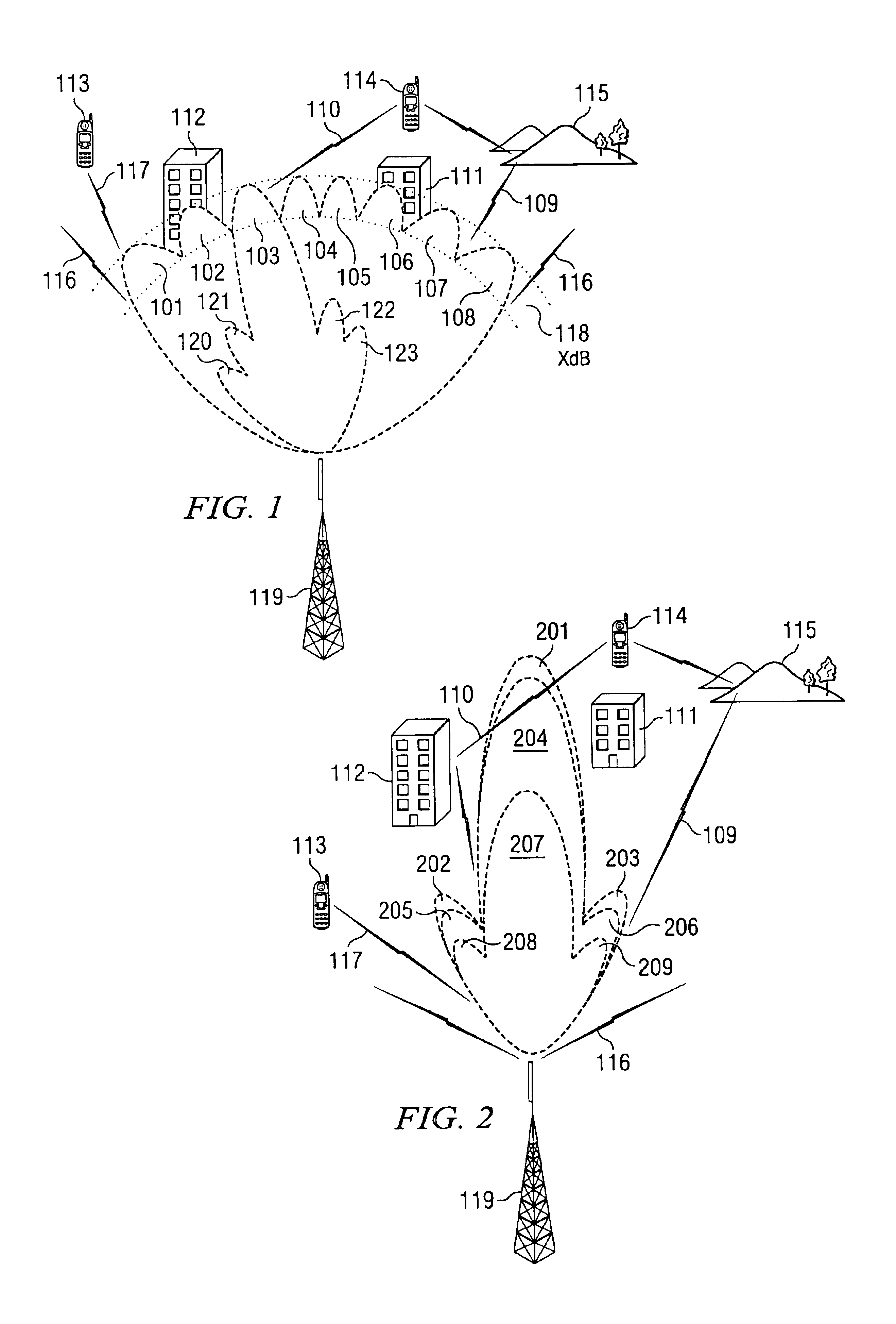Method and apparatus for high resolution tracking via mono-pulse beam-forming in a communication system
a communication system and beamforming technology, applied in diversity/multi-antenna systems, direction finders using radio waves, instruments, etc., can solve the problems of reducing the capacity of the network, switching beam systems do not take advantage of the maximum gain offered, and the prognosis of data rates and aggregate capacity cannot be supported in a small region, so as to improve the range and capacity of mobile or fixed wireless communication base stations.
- Summary
- Abstract
- Description
- Claims
- Application Information
AI Technical Summary
Benefits of technology
Problems solved by technology
Method used
Image
Examples
Embodiment Construction
[0022]Adaptive beam-forming can be implemented digitally in the base-band. Therefore, some means of down-converting an RF signal to base-band as well as a scheme for calibration is assumed. The algorithm can be divided into two steps: 1) a low resolution search performed by the fixed beam searcher, 2) high resolution tracking which utilizes standard mono-pulse techniques. Alternatively, if the approximate location of the mobile or fixed wireless user is known or is determined by other means the low resolution track can be circumvented with high resolution mono-pulse tracking only. The simplicity of this direction-of-arrival estimation calculation will enable real time tracking of a mobile station within the sector area serviced by the antenna.
[0023]The low resolution search is performed by comparing the signals in each of the beams that sub-divide the sector, (eg. 101-108). The signals may be line of sight (LOS) or a time delayed non-LOS multi-path. The base station equipment will d...
PUM
 Login to View More
Login to View More Abstract
Description
Claims
Application Information
 Login to View More
Login to View More - R&D
- Intellectual Property
- Life Sciences
- Materials
- Tech Scout
- Unparalleled Data Quality
- Higher Quality Content
- 60% Fewer Hallucinations
Browse by: Latest US Patents, China's latest patents, Technical Efficacy Thesaurus, Application Domain, Technology Topic, Popular Technical Reports.
© 2025 PatSnap. All rights reserved.Legal|Privacy policy|Modern Slavery Act Transparency Statement|Sitemap|About US| Contact US: help@patsnap.com



